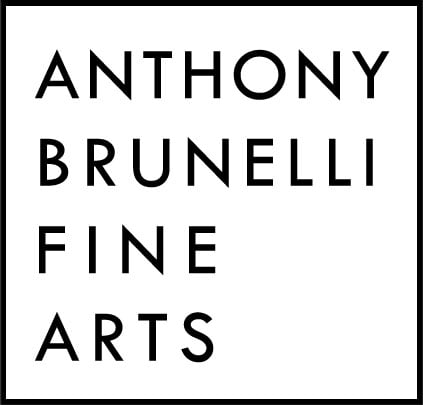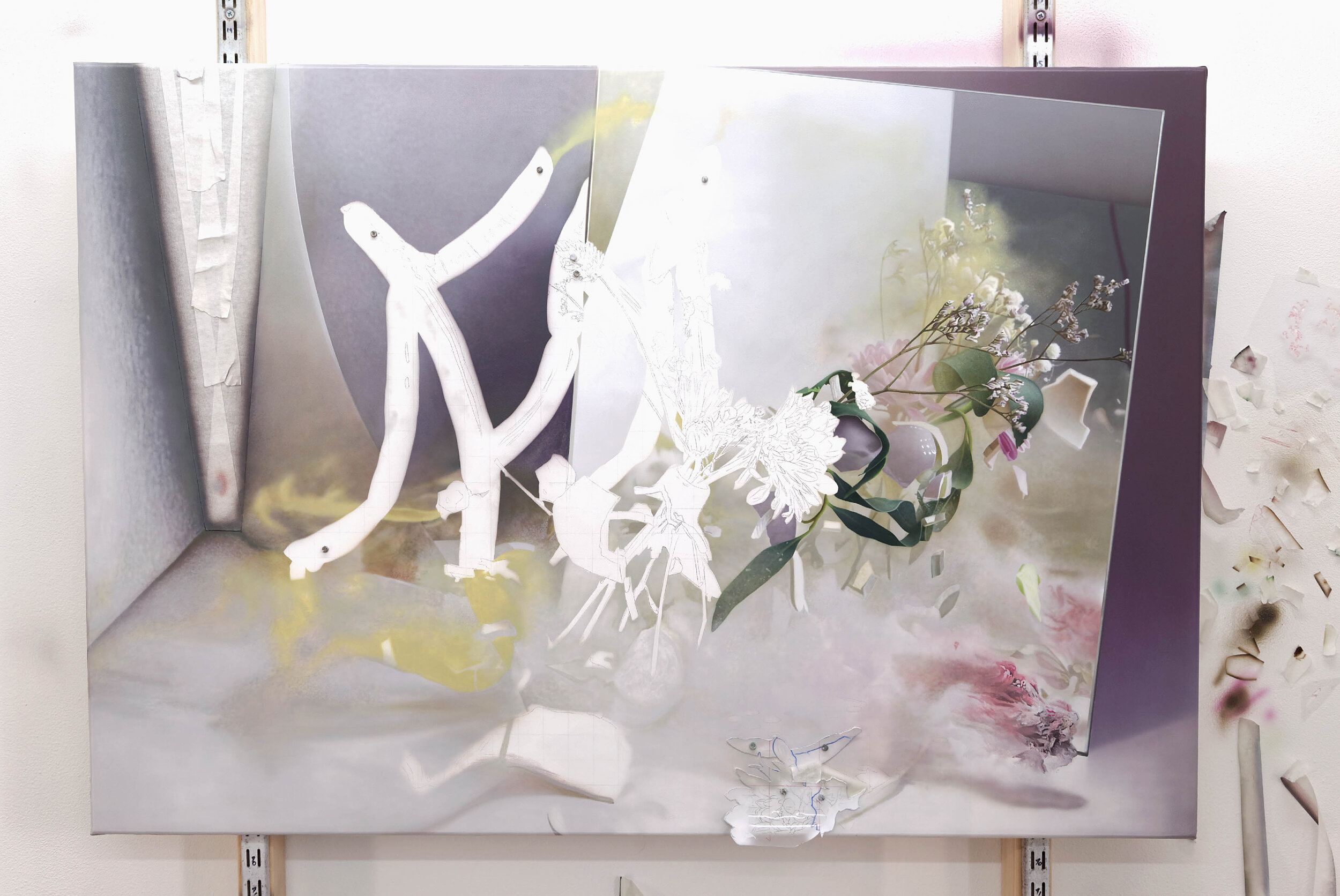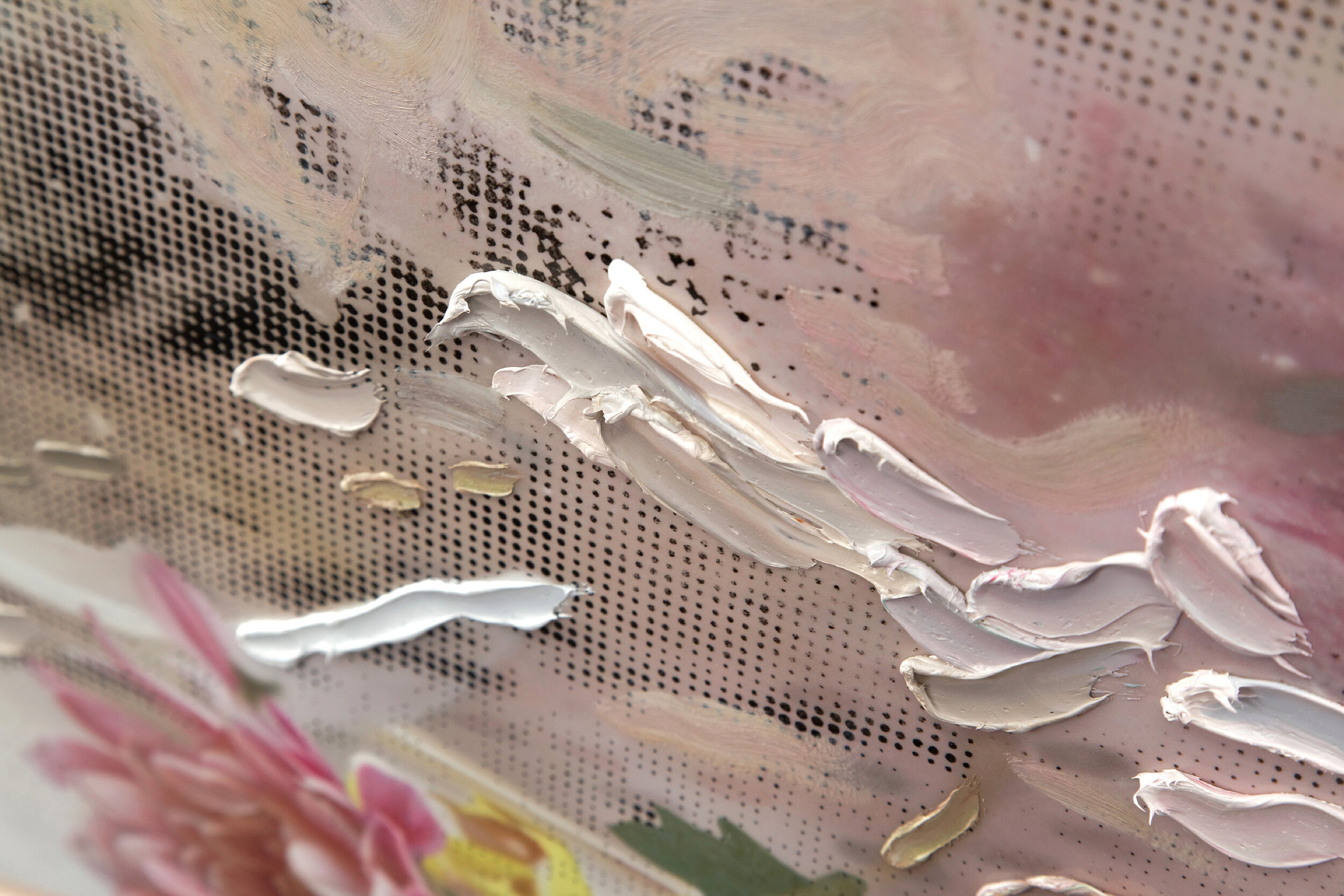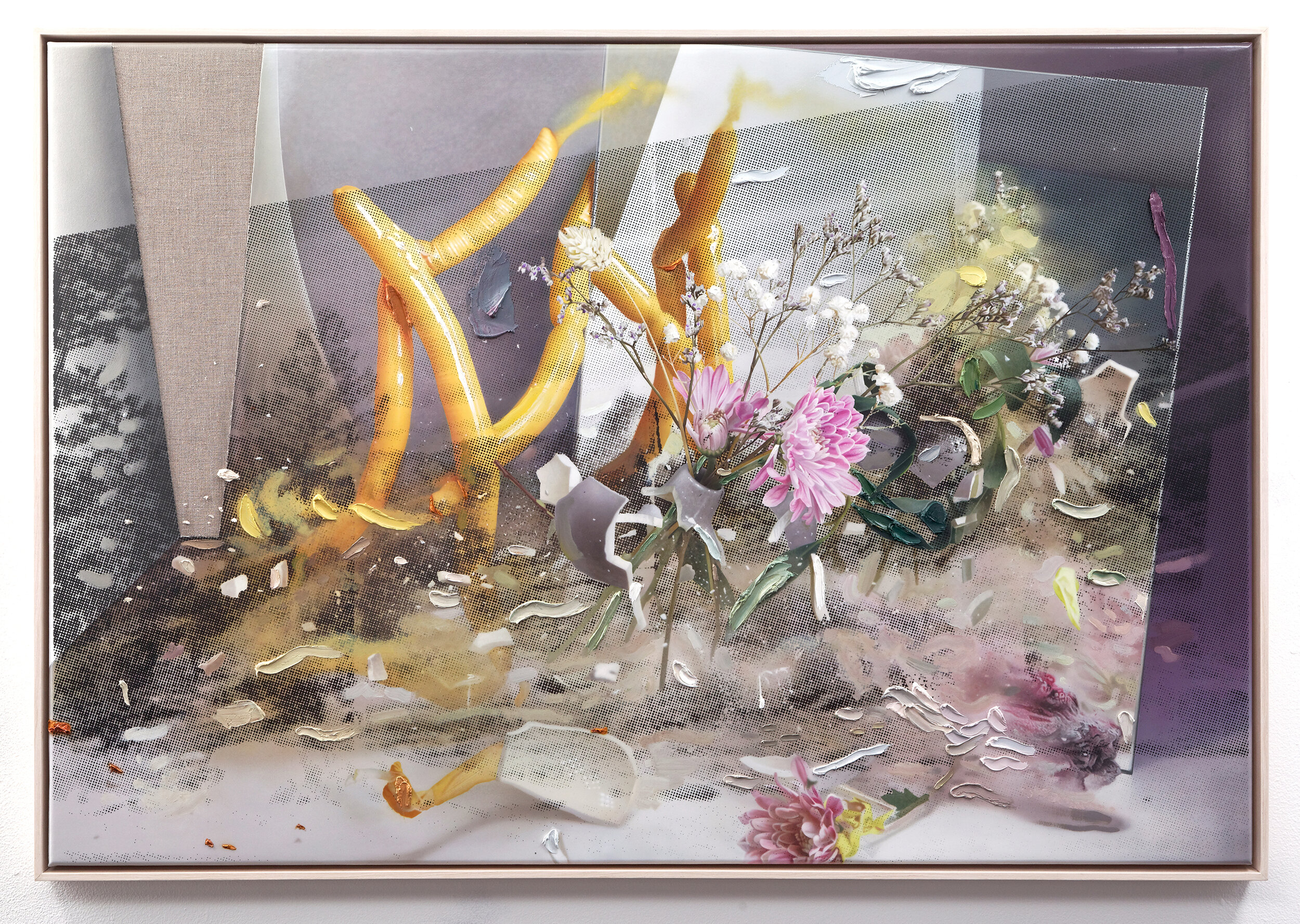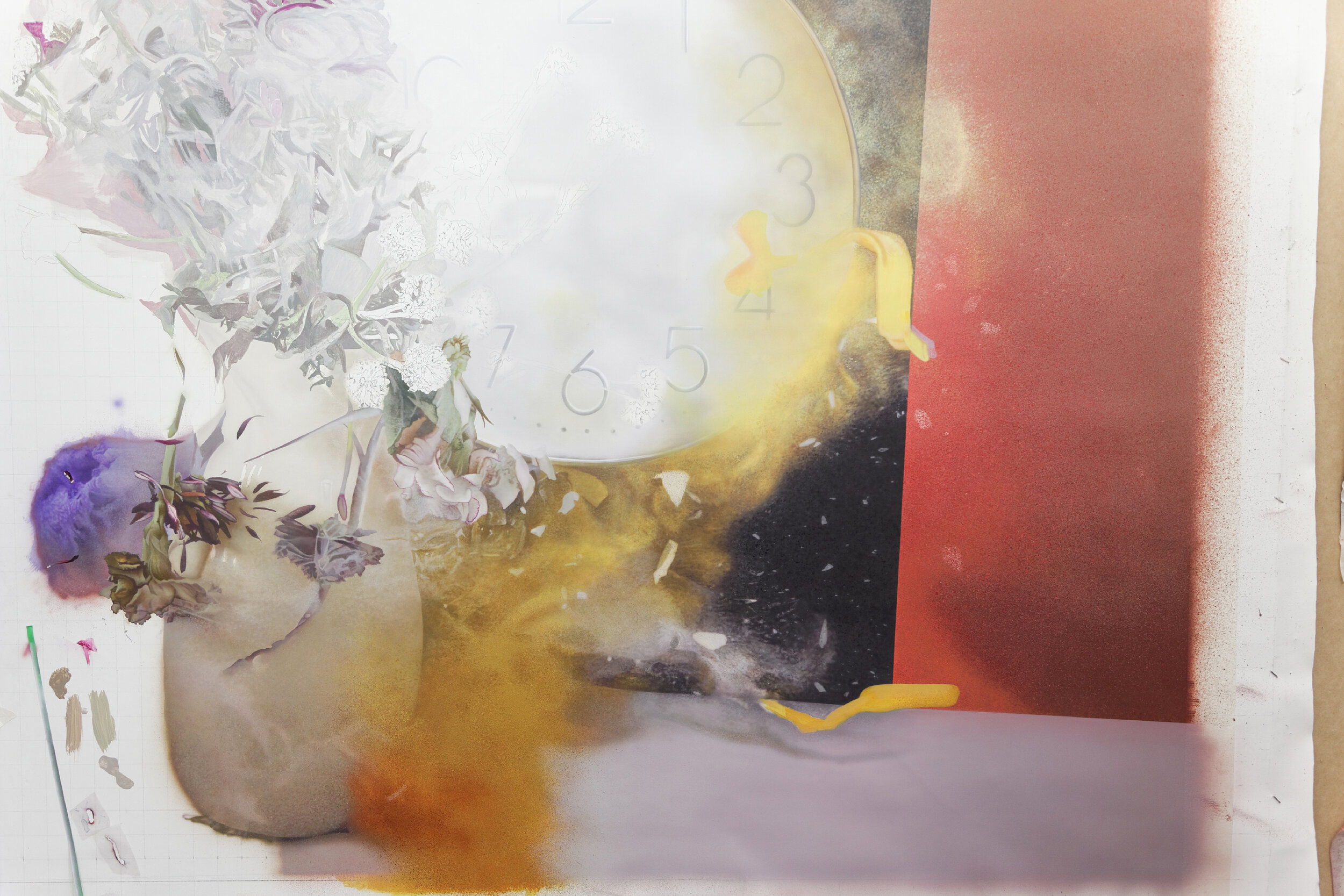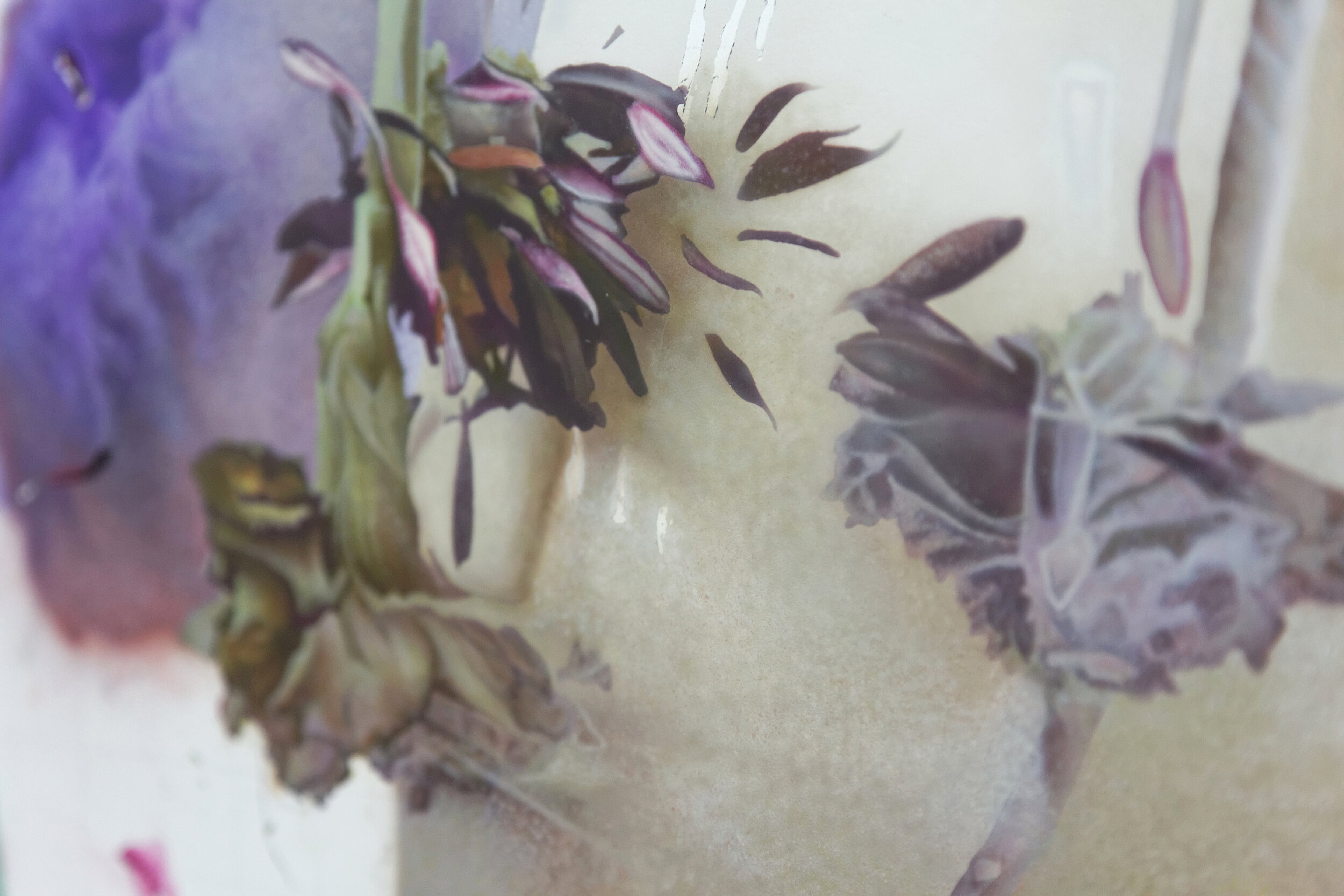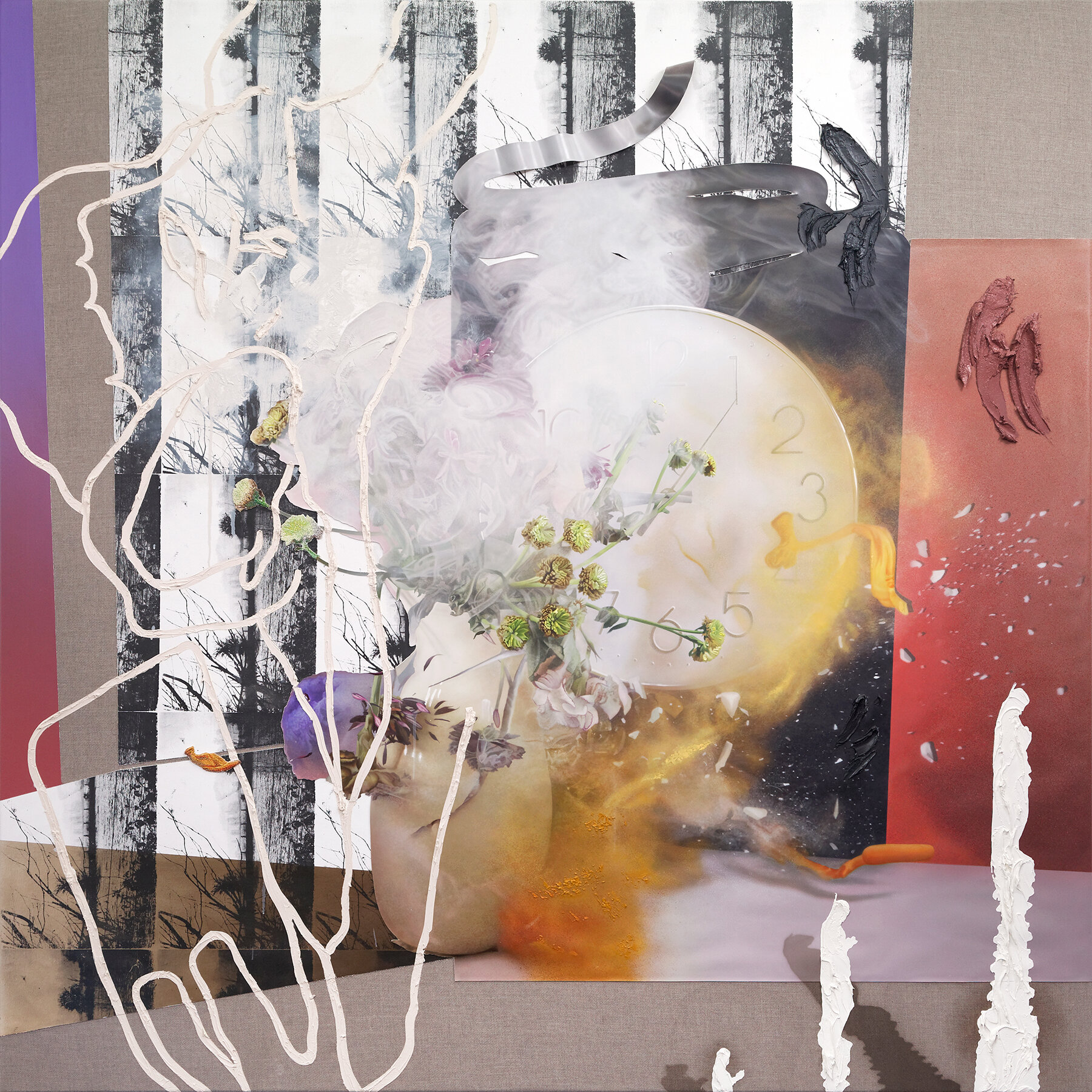Artist Tom Martin (British, b. 1986) discusses his artistic practice, time interests, and the evolution of the work he has produced with a particular focus on his Montage series in the most recent installment in our Artist Insights series below.
My love for precision and detail began when I was at college when I was making paintings which had a level of verisimilitude about them. At that stage in one's artistic development art history is commonly pushed to form a contextual reference point. My tutor at the time recommended I look at Chuck Close, so I did, and over the course of a year or so I became aware of a number of artists that were able to paint in this particular almost beyond realist manner. It inspired me, and encouraged me to hone my own skills.
The very early part of my career I was making work which had no texture and it had a strong affiliation with the photographic image. Photographs were a tool, a way of helping me see information. Increasingly, I began to change or manipulate the information I had available to me, and that evolution is how I have ended up here with the work I’m now making. I see it as a natural progression from where I began.
Quite often when artists make different series or bodies of work each is a way of exploring something slightly different, like drawing a line in the sand almost. One of my series of paintings which have been ongoing since about 2016, I refer to as the “Eternal Present Series.” Essentially, these paintings came about as I began to explore the idea of time as a quantitative data and the way in which it can be defined within painting.
The reference imagery for these works is primarily generated using high speed photography. We have all probably seen images or videos of objects exploding. It is with the aid of the high speed photographic technology, however, that we truly begin to understand the structure and form of such an ephemeral event. Indeed, we exist in a time where what is relevant in society, changes from one day to the next, and though we may look back and forth in order to understand our position, we know that there is no way back to the condition that was. It is that transition, moment of flux between one state and the next that I am fascinated by. That is what I’m exploring on the canvas.
What I find most fascinating about the kind of imagery that I am able to generate visuals with the idea of ‘directed chance.’ By directed chance, I mean there is a precision to what I do, but there is also an infinite number of possible outcomes as I am working to generate an image. The process works like this; I set up a still life composition in a controlled manner, and I attempt to predict what the composition might look like upon impact of a projectile. Through technology, I am able to specify the exact time that an image is generated. That could be for example a 30 millisecond delay from the point of impact, or no delay at all. The longer the delay between impact and photograph, the more distorted or abstract the image becomes. Only through experience in adjusting variables, such as time delay, or placement of objects did I start to understand and then begin to predict what would happen based on the choices I made. For me this combination of precision and chance is incredibly exciting. I can do everything in my power to control and direct how things are going to go, but in the end, there is always an element of surprise in the outcome.
Once I have an image as a starting point I begin to manipulate its representation through the painting process. At a certain point in my practice during this editing process, I found myself rejecting elements from these compositions because they weren’t perfect. After a while I thought, “why am I rejecting these things? Should I not be embracing them instead? Even if embracing means I find another use for them...” This is when the “Montages Series” began to emerge.
The “Montages Series” pieces result from a process of layered imagery, all of which reference my own observation of what it is to be human in the present. Through my choices and layering I work to make sense of how the imagery all fits together; as it does in everyday life. I work with imperfections rather than attempt to perfect them. As a painting progresses it becomes about embracing what I cannot change, and giving meaning to new shapes and forms which begin to emerge. If there is a shape or a form which I don’t really like or can’t give purpose to, I might replace it with information from another source, whether that be from a completely different image, idea or method of image making on the canvas. Sometimes, I will paint nothing there at all, I won't even prime the canvas. Not to prime the canvas in certain areas is a decision that takes place at the very beginning of creating a piece; it’s something which can’t be undone. In choosing to not prime a section of canvas, I place a barrier of sorts down that is later removed. Here too, though planned, there is an element of chance. Only at the later stages when I reveal these unpainted sections can I begin to understand the impact it has on the painting, and what I have to do to move forward if something isn’t right.
There are infinite possibilities and constant questions on how to proceed moving through my head when making any painting. Ultimately, our own version of what reality should look like is informed by our perceptions of the world around us. I have found that it is only when I completely disregard any kind of logic or rationale that I feel free enough to make something I ultimately find enticing. There are no rules in life, and it’s important to remind ourselves of that. My paintings are that of a possible liminal world, caught somewhere between digitisation, observation, and pure fantasy. They are a juxtaposition of so many things, and I’m just trying to make sense of how it all fits together.
